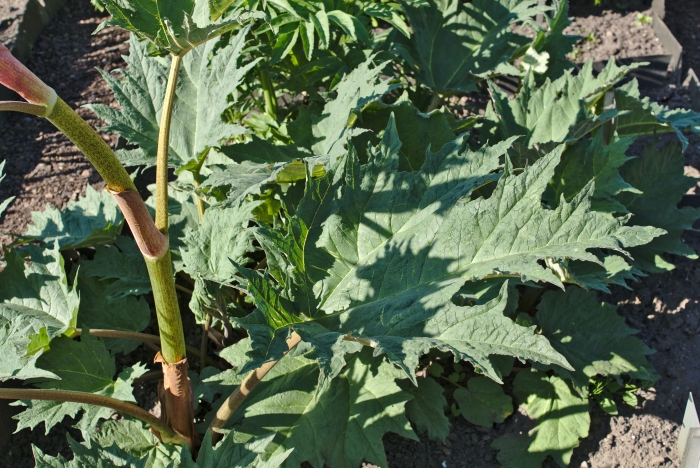Chinese Rhubarb
(Rheum palmatum)
Chinese Rhubarb (Rheum palmatum)
/
/

Alexander Klink
CC BY 4.0


















Estimated Native Range
Summary
Chinese Rhubarb is valued for its bold, architectural form and its striking foliage, which can create a focal point in a border or as part of a larger herbaceous planting. It is also used in traditional medicine for its purgative properties, although it should be noted that the leaves are toxic if ingested. This plant prefers full sun to part shade and requires well-drained soil with consistent moisture. While it is generally easy to maintain, it can be susceptible to crown rot if the soil is too wet. Propagation is typically done by seed in the spring or by root division in spring or autumn. Gardeners should be aware that while it is not typically invasive, it can form large clumps that may require division to manage size and vigor.CC BY-SA 4.0
Plant Description
- Plant Type: Herb
- Height: 6-10 feet
- Width: 4-6 feet
- Growth Rate: Moderate
- Flower Color: Cream, Pink
- Flowering Season: Spring, Summer
- Leaf Retention: Deciduous
Growth Requirements
- Sun: Full Sun, Part Shade
- Water: Medium
- Drainage: Medium, Fast
Common Uses
Deer Resistant, Edible*Disclaimer: Easyscape's listed plant edibility is for informational use. Always verify the safety and proper identification of any plant before consumption., Low Maintenance, Rabbit Resistant
Natural Habitat
Mountainous regions and grassy slopes of Central and Western China, Vietnam, and Tibet
Other Names
Common Names: Ornamental Rhubarb, Turkey Rhubarb, East Indian Rhubarb, Medizinalrhabarber, Handlappiger Rhabarber, Ruibarbo De Levante, Rhubarbe Palmée, Rabárbarbo, Flikrabarber, Zhang Ye Da Huang, Da Huang
Scientific Names: , Rheum palmatum, Rheum palmatum var. palmatum, Rhabarbarum palmatum, Rheum palmatum f. rubriflora, Rheum palmatum subsp. dissectum, Rheum potaninii, Rheum qinlingense,
GBIF Accepted Name: Rheum palmatum L.